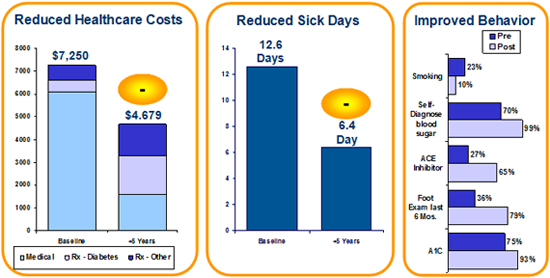Definition of Prevention:
Primary Prevention: Services which prevent a condition from ever presenting.
Secondary Prevention: Services which detect a condition prior to clinical symptoms.
Tertiary Prevention: Services focusing on diagnosis, then management of chronic conditions including mental health, after presentation of clinical symptoms. Often referred to as disease management or care management, most are truly preventive in that they have the potential to halt progression, avoid co-morbidities and prevent costly events such as hospitalization or surgery.
Services which prevent a condition from ever presenting. These services often require a referral to a specialist, and include:
Examples of Primary Prevention:
- Immunizations
- Smoking cessation programs
- Drug/alcohol use/abuse
- Proper diet and adequate exercise
- Education
- Weight control
Examples of Secondary Prevention: Diagnostic testing and screening, may include but not be limited to
- Risk assessment for certain inherited conditions, and
- Cholesterol screening
- Blood pressure screening
- Bone density scans
- Pulmonary function test
- General blood panel
- Blood serum testing for medication-related adverse side effects
- Diagnosis must immediately be followed by a treatment plan to eliminate or manage the condition or to prevent clinical symptoms
Providers: Medical home, specialists for affirmative diagnosis and/or treatment initiation
Examples of applicable chronic conditions: Diabetes, Cardiovascular Diseases, Alzheimer’s or other dementia disorders (e.g., vascular dementia, Parkinson related) , Multiple Sclerosis, Asthma, Cancer, Fibromyalgia, Temporomandibular disorders
Examples:
- Medications – Comprehensive Medication Management (CMM)
- Imaging (CAT/MRI/CAC)
- EKG/EEG
- Daily blood glucose testing
- Physical rehabilitation, including physical and occupational therapy
- Fatigue management
- Chronic pain management
- Stress testing
- Lung capacity monitoring
- Influenza vaccinations
- Regularly scheduled office visits (Monthly/Quarterly/Annually)
- Counseling services – support and education
- Family caregiver assessment
- Coaching
Providers: Medical Home, Physician or Specialist, Nurse Practitioner, Physician Assistant, Care Manager
The Cost-Effectiveness of Prevention
Providing affordable and patient-centered access over the course of the disease or condition – at all three levels of prevention – is cost effective due to the reduction or elimination of unnecessary hospitalizations, surgeries, physician visits, and nursing home placement. When prevention is not affordable, patients will forego necessary testing, prescriptions, or medical visits and their medical conditions will ultimately worsen.
Empowering & Motivating Patients Improved Health & Lowered Costs
Example: The Asheville Project – Diabetes

What are Co-morbidities?
Many Californians with an ongoing or chronic illness or condition have more than one chronic condition (co-morbidities). Co-morbidities not only create a greater risk of disability, but they complicate treatment and create a greater risk of hospitalization.
Concerns related to co-morbidities:
- Drug-Drug interactions
- Patient silos – lack of coordination of care between doctors, specialists and other providers
- Conflicting guideline recommendations
- Certain co-morbidities can decrease compliance
- Certain co-morbidities (such as comorbid depression, anxiety or dementia) can increase treatment costs increase for a chronic condition by 50% or more
